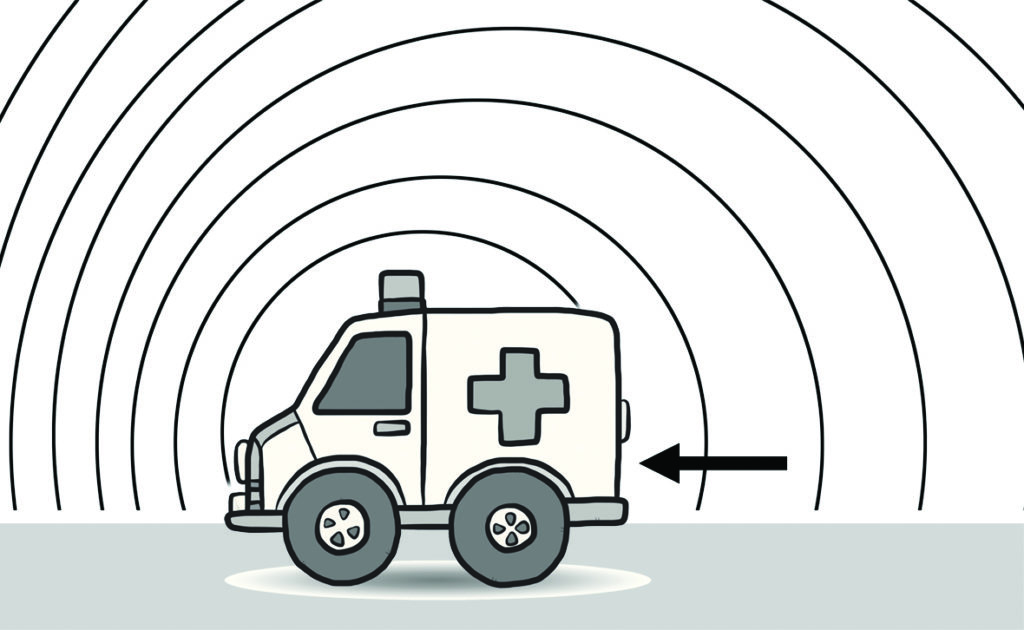One way to give the effect of a moving object is to use sound. A moving object making a particular sound, such as an ambulance with a blaring siren, can seem to be making sounds with two different pitches.
This is because of the way sound waves work. As a moving object approaches making sounds, the sound waves pile up, or compress, in front of the object. The compressed sound waves cause the sound to have a higher pitch. Then when the object moves away, the sound waves spread out and the pitch goes lower.

This effect of seemingly higher and lower pitches from the same sound is called the Doppler Effect. The Doppler Effect is great for indicating to your audience that the object is moving toward or away from the viewer.
You can experience the Doppler Effect in life by observing the sound from an approaching ambulance. As the ambulance drives forward and emits more sound waves, the waves compress in front of the ambulance, producing waves with a shorter wavelength and higher frequency (higher pitched). Conversely, as the ambulance moves away from you, the sound waves are stretched out and have a longer wavelength and lower frequency (lower pitched).
The Doppler Effect is just one of many physics tricks you can use to enhance the visuals in your animation. You can learn more about sound and sound waves in animation in Chapter 2 of Physics for Animators.
